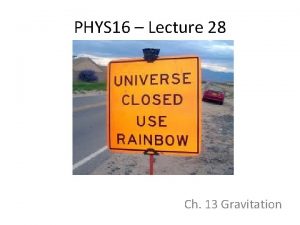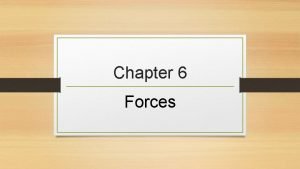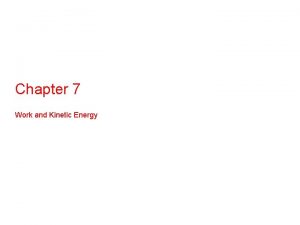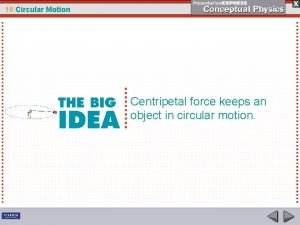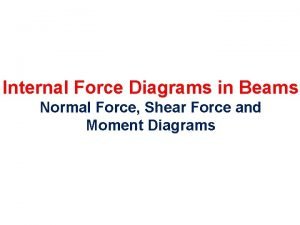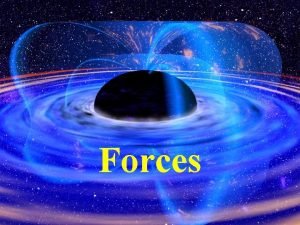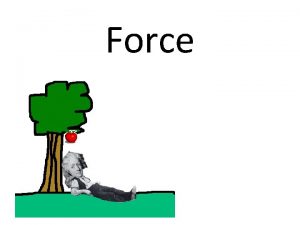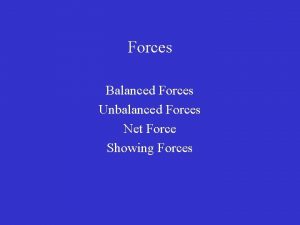Forces Forces What is force It is a









- Slides: 9

Forces

Forces What is force? It is a push or pull exerted on some object. What is the symbol for Force? Capital F What is the unit force? Capital N for Sir Isaac Newton. What is the unit for mass? Kg What are the units for acceleration? m/s 2 So… N= kg●m/s 2

There are two types of forces. When forces result from physical contact they are called contact forces. Ex pulling on a wagon, catching a football. Another class of force is when there is no physical contact between two objects. These are called field forces. Ex. Force of gravity, rubbing a balloon against your hair and then observing little pieces of paper jumping up clinging to the balloon’s surface. They are being pulled by the balloon’s electric field.

Comparing contact and field force

Is force a scalar or a vector? Vector because it has not only a magnitude but a direction as well. We show forces on objects by drawing arrows on freebody diagrams.

Normal Force What is normal force? It’s what prevents an object from moving through a surface. Example a box sitting on a table What is the box’s normal force? Answer: Perpendicular and up

Example: If a box is being pushed to the right against the wall? What is the box’s normal force? Answer perpendicular and to the left.

Assignment 1. List 2 examples of each of the following. a. a force causing an object to start moving b. a force causing an object to stop moving c. a force causing an object to change direction 2. Draw a free-body diagram of a football being kicked. Assume that the only forces acting on the ball are the force of gravity and the force exerted by the kicker. 3. Draw a free body diagram of a crash-test dummy in a car at the moment of collision. For this problem assume that the forces acting on the car are 19, 600 N downward 17, 800 N forward, and 25, 000 N backward. The forces acting on the dummy are 585 N downward, 175 N backward, and 585 N upward.

4. Use the information given above to draw a free-body diagram showing only the forces acting on the car. Label all forces. 5. Use the information given above to draw a free-body diagram showing only the forces acting on the dummy. Label all forces.
 Centripetal force and gravitational force
Centripetal force and gravitational force Contact vs long range force
Contact vs long range force Centrifugal force definition geography
Centrifugal force definition geography Hooke's law vector form
Hooke's law vector form If you whirl a tin can on the end of a string
If you whirl a tin can on the end of a string What is force
What is force Two objects sliding past each other experience
Two objects sliding past each other experience Draw the shear and moment diagrams
Draw the shear and moment diagrams How does mechanical advantage work
How does mechanical advantage work Why electric force is conservative
Why electric force is conservative
